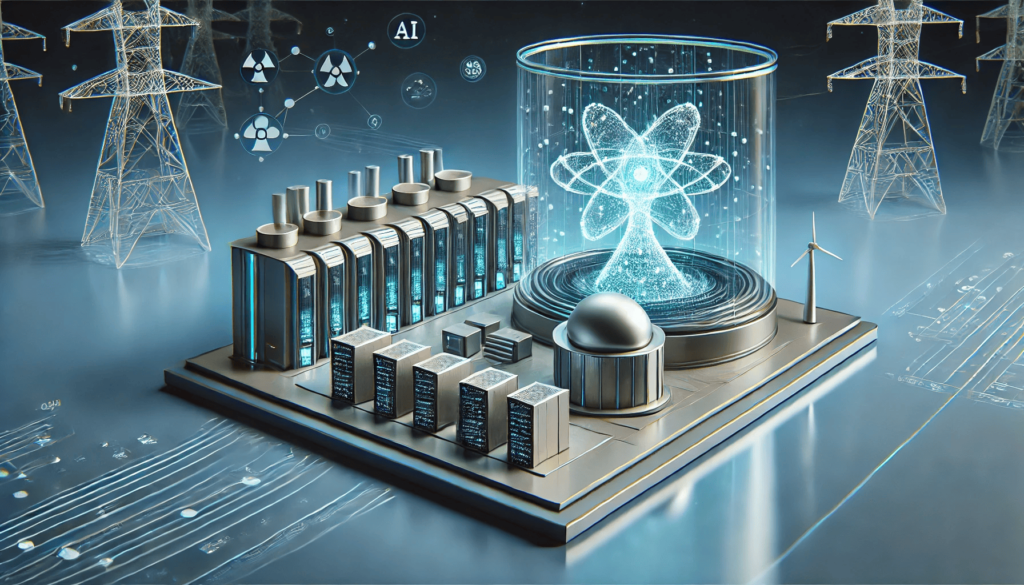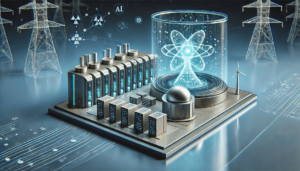Will AI’s Energy Demands Spark a Nuclear Renaissance?

Exploring how AI's energy demands may lead to a nuclear renaissance.
Will AI’s Energy Demands Spark a Nuclear Renaissance?
- How are tech companies like Google and Amazon addressing the growing energy demands of AI?
- What are the potential benefits and challenges of small modular reactors in meeting energy needs?
- Could AI’s energy consumption lead to a renewed interest in nuclear power, and what are the implications?
As artificial intelligence (AI) continues to advance at an unprecedented pace, so does its appetite for energy. The massive computational power required to train and run AI models is leading tech giants to explore new ways to meet their energy needs sustainably. Recently, companies like Google and Amazon have taken significant steps towards investing in nuclear energy, particularly in advanced nuclear reactors. Could AI’s burgeoning energy demands be the catalyst for a nuclear renaissance?
The Growing Energy Appetite of AI
AI applications, especially those involving deep learning and large language models, consume vast amounts of electricity. Data centers housing thousands of servers run continuously, and the energy required to cool these facilities adds to the overall consumption. As AI becomes more integrated into our daily lives—from voice assistants to recommendation systems—the need for reliable, carbon-neutral energy sources becomes increasingly critical.
Tech Giants Turning to Nuclear Energy
In a bid to address their escalating energy demands and reduce carbon footprints, tech companies are exploring nuclear power as a viable solution.
Google has announced plans to purchase electricity from reactors developed by Kairos Power, a company specializing in advanced nuclear reactor technology. By securing a future supply of nuclear energy, Google aims to power its data centers sustainably and meet its carbon-neutral goals.
Similarly, Amazon is investing approximately $500 million in X-energy, a company developing small modular reactors (SMRs). These reactors are designed to be safer, more efficient, and quicker to deploy than traditional nuclear reactors. Amazon plans to utilize energy produced by X-energy’s reactors in its operations in Washington State.
As reported by Nature, these moves signify a broader trend of tech companies investing in nuclear power to support their operations and sustainability objectives.
Small Modular Reactors: A New Era in Nuclear Energy
SMRs represent a significant shift from conventional nuclear reactor designs. They are intended to be built using modular components, allowing for scalability and reduced construction times.
Advantages of SMRs:
- Safety Improvements: SMRs are designed with passive safety features, reducing the risk of accidents.
- Cost Efficiency: Modular construction can lower initial capital costs and make nuclear energy more accessible.
- Flexibility: Smaller size allows for placement in locations unsuitable for larger reactors, supporting decentralized power generation.
Challenges Facing SMRs:
Despite the potential benefits, SMRs face several hurdles:
- Regulatory Approval: New designs require rigorous testing and certification, which can be time-consuming.
- Financial Risk: High upfront costs and long-term return on investment can deter investors.
- Waste Management: Concerns about nuclear waste disposal remain a significant obstacle.
While the tech industry’s investment in nuclear energy is promising, it’s essential to examine the broader implications.
Critics argue that introducing more nuclear reactors increases the risk of accidents and environmental contamination. The issue of radioactive waste disposal remains unresolved in many countries.
The economic benefits of SMRs are still debated. The anticipated cost reductions through modular construction have yet to be realized fully, and the total investment required is substantial.
Some experts suggest that investments would be better directed toward renewable energy sources like solar and wind power, which have seen significant advancements and cost reductions.
According to insights shared in Nature, the debate over nuclear energy’s role in combating climate change continues, with valid arguments on both sides.
Future Scenarios and Implications
Tech giants’ investments could accelerate the development and deployment of advanced nuclear technologies. This influx of capital and confidence might encourage other industries to consider nuclear options.
Increased demand for nuclear energy could lead to changes in regulatory frameworks, potentially streamlining the approval process for new reactor designs while maintaining safety standards.
Nuclear power could complement renewable energy sources by providing a stable base load, offsetting the intermittent nature of solar and wind power.
As someone deeply interested in both technology and sustainability, I find this intersection between AI’s energy demands and nuclear energy intriguing. The pursuit of carbon-neutral energy sources is vital for our planet’s future, and nuclear power offers a high-density, low-carbon option. However, we must approach this potential renaissance with caution.
The safety concerns and waste management issues associated with nuclear energy cannot be overlooked. Transparency, rigorous safety protocols, and advancements in waste disposal technology are essential. Additionally, we should continue investing in and developing renewable energy sources to create a diversified and resilient energy grid.
The surge in AI’s energy requirements presents both a challenge and an opportunity. Tech companies’ interest in nuclear energy could indeed spark a nuclear renaissance, driving innovation and potentially reshaping our energy landscape. However, this path is fraught with complexities that require careful navigation.
Balancing the immediate needs of our technological advancements with long-term environmental and safety considerations is crucial. Whether nuclear power becomes a cornerstone of our energy future remains to be seen, but it’s a conversation worth having.




